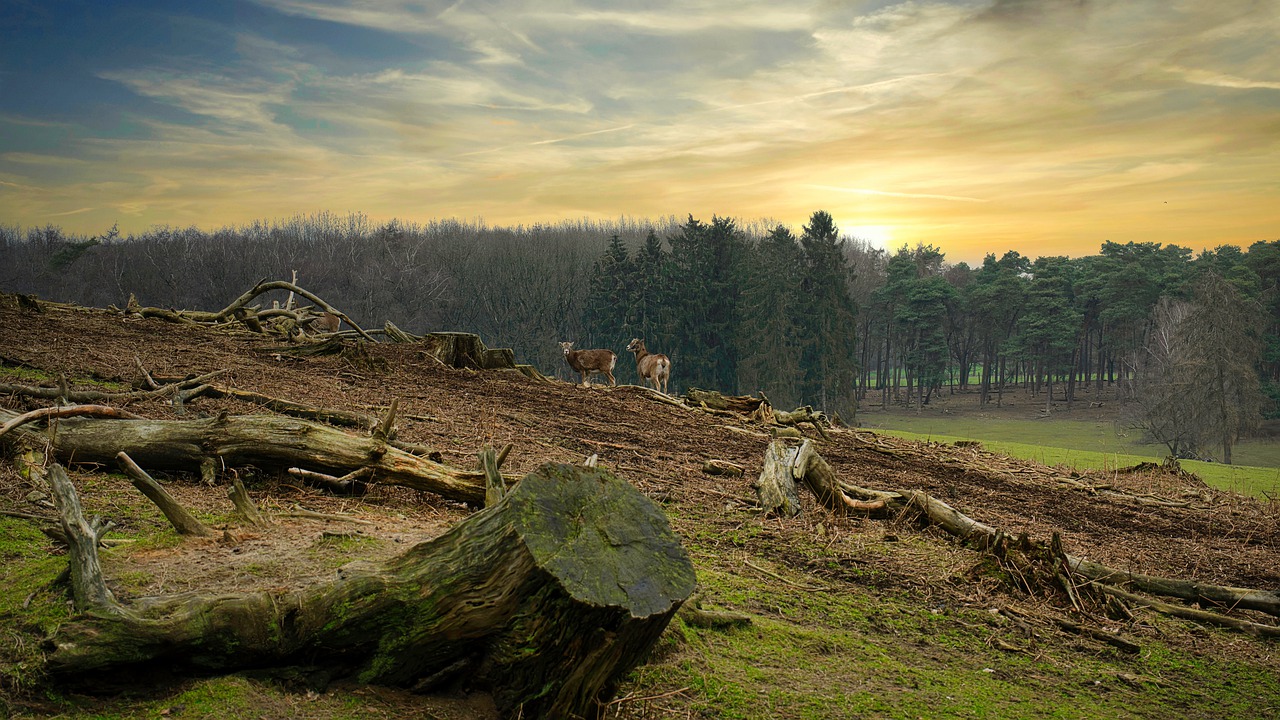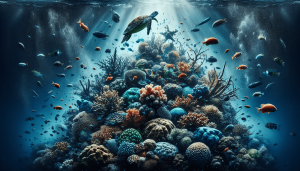In our journey to understand the environmental challenges of today, it’s crucial for us to explore deforestation and its far-reaching implications. “How Does Deforestation Impact The Environment?” could serve as a key piece to unlocking the intricate ways our forests’ depletion influences climate change, biodiversity, and even our local communities. Trees do so much more than just grace our landscapes; they act as our planet’s lungs, filtering out CO2 and releasing oxygen. When we remove them at an alarming rate, we’re not just chopping down wood; we’re unwinding a delicate ecological balance that supports life in myriad forms. Let’s dive into the ripple effects caused by deforestation and uncover what it means for our shared future. Have we ever wondered how deforestation impacts the environment? It’s a question that’s become increasingly important as we face environmental challenges across the globe. Deforestation, defined as the mass removal or thinning of trees in forested areas, might seem inconsequential when viewed in the context of our daily lives; however, its effects ripple across ecosystems, climate, and even human societies.
What is Deforestation?
Before we delve into the impacts, let’s clarify what deforestation entails. Deforestation is the permanent removal of trees and vegetation, leading to the conversion of forests into non-forest lands for uses such as agriculture, urban development, or mining. It’s a global phenomenon, but specific regions like the Amazon Rainforest, Congo Basin, and Southeast Asia are hotspots.
Types of Deforestation
We can categorize deforestation into two main types:
| Type | Description |
|---|---|
| Clear-Cutting | Complete removal of forests, leaving the land bare for alternative uses. |
| Selective Logging | Removal of particular trees for resources while leaving the rest of the forest. |
Clear-cutting is more destructive as it removes all vegetation, disrupting the entire ecosystem. Selective logging, on the other hand, is often deemed a less severe strategy but still significantly impacts the environment if not managed sustainably.
Primary Causes of Deforestation
To understand the impact, we should first recognize the primary causes leading to deforestation:
Agricultural Expansion
Agriculture is the leading cause of deforestation. As the global population grows, so does the demand for food. This leads to significant forest areas being cleared for:
- Cattle Ranching: Especially predominant in Latin America.
- Palm Oil Plantations: Major contributor in Indonesia and Malaysia.
- Soy Farming: A substantial cause in the Amazon Basin.
Logging
Logging activities extract timber for paper, furniture, and other products. While economic, these activities often entail extensive deforestation, especially when illegal logging comes into play.
Urbanization and Infrastructure Development
Expanding cities, roads, and infrastructure encroach on forest land. As more people migrate to urban areas or new developments arise, the pressure on forests increases.
Mining
Mining for minerals, metals, and fossil fuels often leads to deforestation. The land is cleared to extract these natural resources, resulting in significant ecological disturbances.

Environmental Impacts of Deforestation
The immediate effect of deforestation is evident—trees are removed. But the broader environmental consequences reach far beyond the loss of trees.
Loss of Biodiversity
Forests host an estimated 80% of terrestrial species of animals, plants, and insects. Deforestation leads to the destruction of habitats, leaving many species homeless and pushing some towards extinction. Biodiversity loss impacts ecological balance, leading to:
- Disruption of Food Chains: Predators and prey alike face challenges in their survival.
- Genetic Diversity Reduction: As species decline, so does the genetic pool, affecting resilience to diseases and climate changes.
Climate Change Acceleration
Trees act as carbon sinks, absorbing CO2 from the atmosphere. When forests are cleared, the carbon stored in trees is released back into the atmosphere, contributing significantly to global warming. The Intergovernmental Panel on Climate Change (IPCC) indicates that deforestation accounts for approximately 10% of all human-induced greenhouse gas emissions.
Disruption of Water Cycles
Forests play a critical role in regulating water. They affect global water cycles by:
- Maintaining Rainfall Patterns: Trees release water vapor into the atmosphere, inducing rainfall.
- Preventing Soil Erosion: Roots stabilize the soil, preventing erosion and maintaining soil quality.
- Filtering Water: Forests act as natural water filters, ensuring clean water supplies.
Soil Degradation
Without the protective cover of trees, soil is prone to erosion. Rainwater washes away topsoil, which is rich in nutrients essential for plant growth. This degradation leads to:
- Loss of Arable Land: Soil quality deteriorates, affecting agricultural productivity.
- Increased Flooding: Erosion leads to sediment build-up in rivers and streams, increasing the risk of floods.
Social and Economic Impacts
Deforestation’s impact isn’t limited to the environment; it significantly affects human societies and economies.
Indigenous Communities
Many indigenous communities rely on forests for their livelihood. Deforestation displaces these communities, leading to:
- Loss of Homes: As forests disappear, so do the traditional homes of indigenous people.
- Destruction of Culture: With displacement, cultural practices and knowledge rooted in the forest are at risk of vanishing.
Economic Consequences
Though deforestation can provide short-term economic gains, the long-term consequences often outweigh these benefits:
- Loss of Ecosystem Services: Forests provide essential services like water purification, pollination, and climate regulation that have significant economic value.
- Health Impacts: Loss of biodiversity can lead to the emergence of zoonotic diseases, affecting public health and resulting in economic costs.

Global Responses to Deforestation
Recognizing the multifaceted impacts of deforestation, global efforts have been initiated to mitigate it. Let’s explore some key strategies:
Reforestation and Afforestation
Reforestation involves replanting trees in deforested areas, while afforestation is the planting of trees in previously non-forested areas. Both strategies aim to restore ecological balance and combat climate change.
Legislation and Policy
Governments worldwide are enacting laws and policies to protect forests. Examples include:
- Brazil’s Forest Code: Regulates land use and ensures the preservation of vital forest areas.
- European Union’s Timber Regulation: Prevents illegally logged timber from entering the EU market.
Sustainable Practices
Promoting sustainable land use and resource management is essential. This includes sustainable forestry, farming practices, and the promotion of eco-friendly products.
International Agreements
Global agreements like the Paris Agreement include commitments to reduce deforestation. Initiatives like REDD+ (Reducing Emissions from Deforestation and Forest Degradation) provide financial incentives for developing countries to maintain and restore forests.
What Can We Do?
As individuals, we also have a role to play in combating deforestation:
Conscious Consumption
Being mindful of the products we purchase can significantly impact deforestation rates. Opt for sustainably sourced products, reduce meat consumption, and support eco-friendly brands.
Advocacy and Education
Raising awareness about the impacts of deforestation and advocating for policy changes can drive significant change. Educating others and participating in conservation efforts amplify the voice for protecting forests.
Support Conservation Organizations
Many organizations worldwide work tirelessly to combat deforestation and promote sustainable practices. Supporting these organizations through donations or volunteer efforts can contribute to larger conservation goals.

The Future of Our Forests
Looking ahead, the future of our forests hinges on our collective actions. Balancing developmental needs with environmental conservation is crucial. Innovation and technology are paving the way for more sustainable practices, yet these efforts require global cooperation and commitment.
Possible Technological Solutions
Advances in technology offer promising solutions for monitoring and curbing deforestation:
- Satellite Monitoring: Facilitates real-time tracking of forest cover changes, aiding enforcement against illegal logging.
- Drones and AI: Enhance precision in reforestation efforts and monitor forest health effectively.
- Blockchain Technology: Ensures transparency and accountability in supply chains, addressing illegal timber trade.
Community Involvement
Empowering local communities to manage forests sustainably has shown positive results. Approaches like community forestry involve locals in conservation efforts, ensuring they benefit economically and socially while protecting the forest.
Economic Incentives
Creating economic incentives for forest conservation can shift the balance towards more sustainable practices. This includes:
- Payment for Ecosystem Services (PES): Compensates landowners for maintaining forested areas.
- Eco-Tourism: Promotes sustainable travel to forested areas, generating income while preserving nature.
Conclusion
How does deforestation impact the environment? The implications are vast, impacting biodiversity, climate, water cycles, soil health, and human societies. It’s a global challenge that requires urgent action from governments, organizations, and individuals alike.
We must understand that forests are not just a resource but vital ecosystems that sustain life on Earth. By promoting sustainable practices, advocating for change, and supporting conservation efforts, we can ensure that our forests continue to thrive for future generations.
Let’s take action today to preserve the lungs of our planet and foster a greener, more sustainable world.



